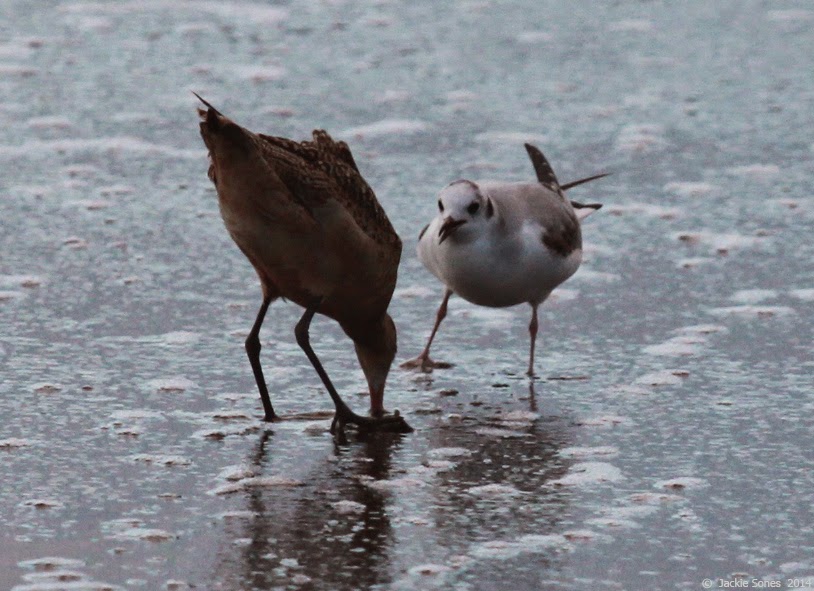After the big waves on Thursday and Friday, we took a short walk to see if anything interesting had washed up on the beach.
We noticed quite a bit of Strap Kelp (Lessoniopsis littoralis). I showed pictures of this species in April 2012, so click here to review what Strap Kelp looks like when it's attached to the rocks.
Below is an example of one specimen washed up on the beach:
Did you notice anything growing on the kelp? You can look again if you need to.
If you need a better view, here's a close-up of the base of the kelp:
What was interesting about the Strap Kelp washed ashore this weekend was that almost every specimen had significant clumps of Gooseneck Barnacles (Pollicipes polymerus) growing on them.
Many of the barnacles were juveniles — note the small size, gray coloration, and pale stalks (above). A few of the barnacles were older — note the larger size, whiter plates, and darker stalks (below):
This observation confirmed something, but also led to a somewhat frustrating question.
This fall we've noticed that it seems to have been a very good year for Gooseneck Barnacle settlement. That is, we've seen lots of juveniles around. Seeing so many juveniles growing on Strap Kelp just confirms the observations of good Gooseneck Barnacle settlement at other sites.
But I also realized that I couldn't remember if I'd ever seen Gooseneck Barnacles growing on Strap Kelp before. This always frustrates me. I've seen both species quite often, but now I can't remember if I've ever been observant enough to notice if Gooseneck Barnacles regularly grow on Strap Kelp, or if it only happens in good settlement years for the barnacles? Do you know?
And one more interesting question to ponder — Do you think the barnacles would help, harm, or have no effect on the kelp in terms of its susceptibility to waves?

















































